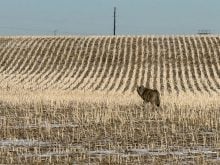The federal government will squeeze a $4 million contribution over the Canadian mustard industry, which will help develop new markets for the Canadian-grown oilseed.
Federal agriculture minister Gerry Ritz announced the funding package July 16 in Scott, Sask., saying the contribution will help Mustard 21 Canada develop new mustard varieties and identify new market opportunities.
Mustard 21 Canada is a non-profit, industry-driven initiative aimed at expanding mustard use at home and abroad.
“This investment will help to unlock the potential for mustard seed, finding new ways to use it beyond the hamburger, and expanding markets for our farmers,” Ritz said during an event commemorating 100 years of agricultural research at Agriculture Canada’s Scott Research Farm.
Read Also

Internet of Things tapped for better emissions insights
Interconnected field sensor fleet allows better soil monitoring coverage and, hopefully, live insights on farm greenhouse gas emissions and nitrogen fertilizer application for farms.
Canada is the world’s largest exporter of mustard seed, and the bulk of Canadian production takes place in Saskatchewan.
Most mustard produced in Canada is used to produce condiment mustard, a market with limited growth potential.
Mustard 21 Canada president Peter Desai said the industry decided a few years ago to examine alternative uses and develop new markets.
It completed a strategic plan in 2008 to achieve those goals. The plan identified biopesticides and biodiesel additives as potential markets that could generate additional sales opportunities.
Desai said the government funding will help Mustard 21 achieve key priorities outlined in the strategic plan.
“These priorities include developing competitive crops through better varieties and weed control to maintain the Canadian production advantage in the global markets.”
He said a key to expanding mustard use is to develop varieties grown specifically for industrial applications, such as fuel additives and lubricants.
Another priority is the evaluation of mustard meal as an anti-microbial that can be added to processed or packaged food to expand shelf life.
It is also possible that the meal from crushed mustard could be used as a biopesticide on golf courses or in jurisdictions that have banned the use of conventional herbicides and insecticides.
The $4 million package was delivered through the Agri-Innovations program, a five-year $158 million program that supports industry-led initiatives aimed at expanding markets and exploring new value-added processing opportunities.
The Saskatchewan Mustard Development Commission and the Canadian Mustard Association initiated the Mustard 21 Canada project.















